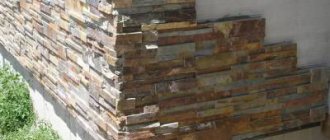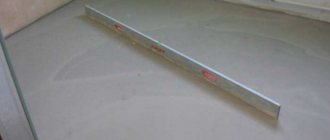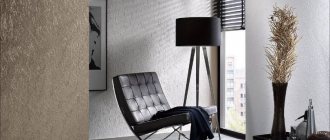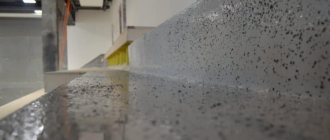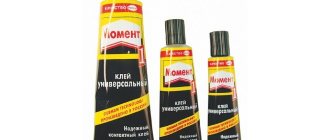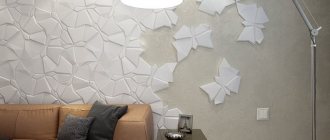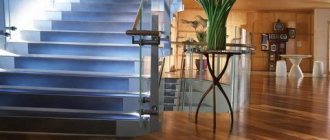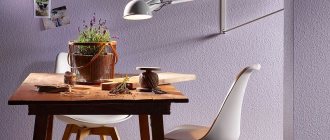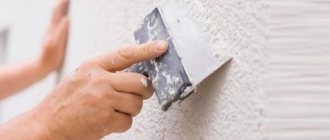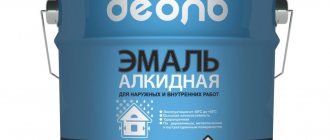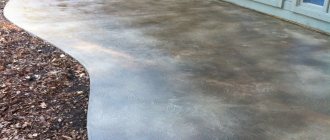Basic properties
The polyurethane varnish layer significantly extends the service life of the wood, and also emphasizes the natural pattern and texture of wood, such as parquet, or other material. The polyurethane type of varnish has much higher protective characteristics compared to other varnish solutions. After the surface is treated with this composition, a high-strength film is formed on it, which will provide the tree with reliable protection from mechanical damage, exposure to water, the negative influence of the atmosphere, the spread of rot and the proliferation of microorganisms.
Polyurethane solutions are often used to treat concrete and parquet floors. The characteristics and purpose of the varnish depend entirely on the components of which it consists. The polyurethane mixture significantly increases the performance properties of the treated surfaces, as a result the base becomes very durable, moisture-resistant and resistant to the harmful effects of abrasive elements, acids and all kinds of petroleum products.
Details
Application area
Such varnishes are mainly used for application on wood surfaces. But the solution perfectly protects not just wood, but also most other materials. Let us highlight the following areas of use of varnish:
- Creation of a highly reliable protective coating for walls, floors and ceilings, as well as wooden furniture. A durable film from such a varnish protects the surface from mechanical stress and also prevents chemical damage.
- The solution perfectly saturates surfaces such as roofing material, concrete, bricks in the form of slate tiles.
- Polyurethane compounds are the best for processing parquet.
- Varnish is used to create a “wet stone” effect.
- Used for both exterior and interior decoration.
- The composition is ideal for preventing the formation of rust on concrete and metal.
Let's consider all types of varnishes.
Varieties - properties and composition
Polyurethane-based coatings can have different compositions, which will affect the quality of the future coating. Based on the chemical composition, the following types of mixtures are distinguished:
Two-component.- One-component.
The latter solutions are made on the basis of water and are released in finished form (can be applied immediately). The most convenient for use will be aerosol varnishes, and the advantage of using such cans lies in the speed of drying of the created coating. The advantages of using polyurethane varnish include:
- Health safety - one-component mixtures do not contain toxic components or organic solvents.
- When dry, the varnish will not release harmful substances into the air.
- The material is safe and does not burn.
But one-component formulations are much worse in quality than mixtures of two components. Such solutions are made immediately before finishing work begins. This composition will include a hardener and a base. To prepare the mixture for application, you need to mix both components with each other. But the disadvantage of the composition is the short permissible period for storing the solution. The mixture can be used 5 hours after preparation. Two-component varnishes have higher technical parameters than one-component compositions. If the surface is subject to enormous mechanical loads, then only two-component solutions are required for processing. Polyurethane-based mixtures are classified not just by chemical composition, but also by area of application. Depending on the area of application, the following types of varnishes can be distinguished:
- Yacht - this type of coating was originally intended for covering wooden yachts, but now the material is actively used for external and internal finishing of various wooden structures. The advantage of this varnish, first of all, will be its high resistance to moisture.
- For plastic - to process plastic products, they produce formulations that do not contain latex components.
- Parquet.
- For furniture items.
- Universal (for all kinds of surfaces).
Now about the flowers.
Color palette
Varnish made from a polyurethane base is usually produced in a transparent, colorless form, which makes it possible to emphasize the natural wood structure when applying the composition to the surface. By shine, you can distinguish between glossy and matte coatings. Such differences in shade do not have any effect on the technical parameters of the material.
The difference may be in certain operational features:
- Matte varnish perfectly emphasizes the wood texture.
- Glossy finishes are most susceptible to scratches. In addition, defects on a shiny surface are more noticeable than on a matte type coating.
- This coating is more resistant to UV radiation. For outdoor work, it is better to use this type of paintwork material.
Certain manufacturers of finishing materials produce polyurethane-based varnishes that contain coloring agents. Mixtures with pigments make it possible to give the surface the desired shade.
Manufacturing companies
The quality of polyurethane-based coatings will directly depend on the composition of the mixture and production. It is better to choose materials that are produced by companies that have established themselves as manufacturers of varnish coatings.
Pe tri
The history of such a company goes back more than 50 years, and the company occupies a TOP position in America in the production of polyurethane varnishes. All products under the Petri brand are distinguished by excellent quality and high strength properties. The line of varnish compositions based on polyurethane includes 10 different modifications of the material, which differ in properties and composition. The use of all mixtures from this company guarantees a high-strength coating with the effect of diamond hardness. This material is ideal for treating floors in rooms where there is a lot of traffic and the load on the surface is very high.
Po listu with
The best coating with polyurethane varnish can be obtained by using products from Rolistuc, which are made in Italy. Polyurethane varnishes are used for industrial and domestic construction. The mixtures are mainly produced for processing wooden and metal structures. Such varnishes are highly resistant to abrasion and scratches on the surface. Using this material, you can create a durable and high-quality coating that will not turn yellow over time.
"Irakol"
This company is one of the largest manufacturers of professional coatings in the Russian Federation. Products from are not inferior in quality to products from manufacturers from all over the world. In the production of polyurethane-based varnishes, only modern high-tech equipment and high-quality raw materials are used. The cost of products with better quality is lower than for foreign analogues.
Use and Application Methods
The technique for applying polyurethane varnish to the surface will depend on the composition of the mixture and the area of application. But you need to remember that in any case, before finishing work, it is necessary to carry out the preparation and cleaning procedure.
Wood surface coating
Before carrying out repair work, the wooden base must be cleaned of dirt and, if necessary, sanded. If there are greasy stains on the wood, they must be removed. When wet cleaning does not help get rid of these contaminants, you can degrease the surface using a solvent. If the wooden structure will be used outdoors or at high humidity, then it must be treated with a special composition to improve its antiseptic qualities. To emphasize the natural structure of wood or to give the material the required shade, it is important to coat the product with stain before applying varnish. If you cover the floor with paints and varnish, there will be a need to protect the lower part of the walls from contamination, and for this purpose the walls are covered with masking tape around the room perimeter. Once the wood surface is ready for processing, you can begin making the solution for application. One-component compositions are sold in finished form.
But in certain cases, a solvent must be added to such mixtures:
- If the solution is distributed using a brush, it is not necessary to dissolve it with a synthetic solvent.
- When working with a roller, it is necessary to introduce 5-10% solvent.
- When a spray gun is used to apply paintwork materials, the consistency should be liquid, and therefore approximately 20% solvent must be added.
Two-component formulations are made in strict proportions, as indicated on the manufacturer’s label. Preparation instructions are always on the package, and it is better to apply them with a fur roller. Surface treatment should be carried out in the direction along the wood fibers. It is recommended to apply the coating in at least 2 layers. In some cases, 4 layers of mixture are required. The varnish is distributed over the surface with smooth and slow movements. If the work is not done correctly, bubbles may appear on the coating. The last layer is applied only to a clean and dry coating. The time interval before a new treatment can be from 2 to 6 hours. Remove all accumulated dust from the surface using a damp cloth or vacuum cleaner. We also recommend going over the first layer with sandpaper. The drying time of the final layer depends on the type of polyurethane varnish used and is approximately 8 hours.
Concrete floor
Polyurethane varnish can also be applied to concrete floors. To improve the quality of operation of a self-leveling concrete floor, polyurethane coatings are usually used. For the coating to be of high quality, the floor must be as smooth and clean as possible. If the floor contains no polymer substances, then the surface must be primed. For treating concrete floors, it is recommended to use only two-component mixtures. To create an original decorative coating, you can make different patterns on the surface using special stencils. Otherwise, the technology for applying the solution to concrete is no different from similar work for a wooden floor.
Advantages and disadvantages
The polyurethane type of water-based varnish, in comparison with other paint and varnish products, has the following advantages:
- can be applied to almost any material and any type of wood, including pine, maple, beech and hardwood;
- the application process is very easy and quick;
- the protective layer does not require any special care after drying;
- the dried varnish film is resistant to water and all kinds of household chemicals, so you can carry out wet cleaning without fear;
- The varnish layer after drying is elastic, therefore, with minor deformations of the floor, cracks do not appear on the polyurethane varnish;
- resistant to mechanical stress and abrasion;
- withstands temperature changes without problems;
- long service life of the protective coating;
- high strength index;
- resistance to any precipitation and sunlight.
Despite these advantages, polyurethane wood varnish has the following disadvantages:
- some types of polyurethane varnishes contain organic solvents, which is why these mixtures have an unpleasant odor, and they are also unsafe for humans and are not environmentally friendly;
- if you buy a cheap polyurethane-based varnish of low quality, then after some time it will lose its original appearance and may turn yellow;
- high-quality mixtures are usually quite expensive;
- If you incorrectly apply a polyurethane composition to wood, for example, to parquet, then various defects may be visible on the floor.
Popular products
One of the varnishes used by Russian consumers is PF-231, a domestically produced varnish. Despite the simple composition, the coating after applying this alkyd varnish looks neat, and the resulting film has high protective properties. But the service life of this material is short.
More popular is varnish of the MCh-0163 brand, which is not afraid of moisture and mechanical stress. But the film it forms does not have sufficient elasticity, and the material itself is not resistant to ultraviolet radiation. In addition, this type of varnish emits a pungent odor when working with it.
Related article: How to choose parquet varnish and what types does it come in?
Protective aerosol varnish is resistant to weather conditions. This product is used as a protective varnish on the surfaces of wood, metal, glass, stone, plastic and other materials. This aerosol varnish is easy to apply and quickly spreads over the surface.
Varnish with a one-component composition EP-2146, in which epoxy resin serves as a modifier, has good performance characteristics. This material is used to cover parquet, veneer, fiberboard, chipboard and plywood. Apply in two or three layers, each of which must dry completely before applying the next. The drying time is fully compensated by the long service life of the varnished surface, which becomes extremely durable.
Varieties
All polyurethane varnishes, according to their classification, can be divided into two-component compositions and one-component, ready-to-use solutions.
- The one-component polyurethane varnish is water-based and comes ready for application. A roller or paint brush is used as an application tool. The water-based composition can be applied to wood; this mixture is environmentally friendly and safe for humans because it does not contain organic solvents. This varnish does not emit any odor or toxic components when applied. Stores sell one-component polyurethane mixtures for wood in the form of aerosols supplied in cans. Thanks to spraying, you can very easily and quickly treat hard-to-reach areas or small wood products. Single-component aerosols dry very quickly on the surface.
- Two-component varnishes are not supplied ready for application. You need to prepare the solution yourself by mixing the base with the hardener. The components must be mixed immediately before starting varnishing. Two-component polyurethane varnish for wood has higher technical characteristics than a one-component solution.
It is important to remember that the prepared two-component composition can only be used for a short period of time, usually within 4 hours.
When is it better to use polyurethane varnish?
Polyurethane varnish is an excellent decorative coating.
This product is available in several different formulations and serves not only to improve the aesthetic qualities of the surfaces treated with it, but also significantly extends the service life of the materials that have been coated with it. Polyurethane parquet varnish is in some way a high-tech material. It contains special chemicals that harden upon contact with air, forming a durable and mechanically resistant polyurethane film. Currently, parquet polyurethane varnish is actively used for wood, which for a long period retains the excellent aesthetic characteristics of this flooring option.
Types of shine and color
Polyurethane varnishes have different degrees of gloss; there are the following types of compositions:
- glossy;
- semi-gloss;
- semi-matte;
- matte.
The technical characteristics of the protective layer do not change depending on the type of gloss. It is worth considering that on glossy wood, for example, parquet, damage, small defects and scratches that occur either when the composition is applied incorrectly or during operation are much more noticeable. If you need to cover a base that will be exposed to chemical and mechanical stress, then it is advisable to apply a matte varnish.
Most often, a transparent polyurethane varnish is made, but stores also sell tinted modifications of oil-based compositions. Colored mixtures simultaneously varnish the surface and act as a stain. Such compositions are made in accordance with the shades of natural wood. But if the client does not find a suitable color in the existing palette, then the manufacturer offers tinting in the required shade.
How to varnish concrete floors
To improve the performance characteristics of a self-leveling concrete floor, which is subjected to heavy and frequent loads, the surface is covered with polyurethane varnish. The base should be pre-prepared, leveled and cleaned of dirt and dust. To do this, you can use a soap solution or clean the surface under water pressure. After which it should dry completely.
Polyurethane varnish for concrete Tistrom from the KrasKo brand.
Before applying the varnish for self-leveling floors, the dry base can be additionally vacuumed, which will allow you to get a perfectly clean surface and achieve a high-quality painted base.
If the self-leveling floor does not contain polymer components, the surface should first be primed, which will facilitate the formation of an airtight layer. This technology will also save the amount of varnish.
Note! Concrete surfaces are coated exclusively with two-component wear-resistant floor varnishes.
The selection of the required amount of working solution is carried out taking into account its use for 40-50 minutes.
You can create decor on the surface of the self-leveling floor before applying varnish. For this, special stencils and coloring compounds are used. You can also use ready-made printed designs.
The technology for applying varnish to a concrete surface is no different from the technique for processing a wooden base. First, they pass through hard-to-reach places with a brush. The varnish is applied to the surface in small areas.
Polyurethane compositions for concrete floors have high wear-resistant characteristics.
Area of use
In addition to applying to wooden surfaces, polyurethane composition can be used to protect the following materials:
- ceramic tiles, on which the varnish creates a thin transparent film;
- impregnation of concrete, brick surfaces, as well as slate;
- protection of ceilings, walls and floors made of any materials;
- treating the stone with a transparent varnish to obtain the effect of a wet surface;
- application to mineral substrates to reliably protect them from destruction;
- parquet flooring, in order to improve its appearance and protection;
- coverings of wood furniture, as well as stairs, and other structures, to protect against the negative effects of chemicals and mechanical stress;
- application on various metals, concrete surfaces, stone, varnish on these materials protects them from destruction.
One-component and two-component types of polyurethane varnish are used when performing external and internal work, used in domestic conditions, in industry, and also to protect plastic surfaces.
Reasons for varnishing
The market for modern materials is filled with various materials for floor finishing.
But wooden floors always remain a classic option, and it’s quite difficult to compete with them. After all, wood is distinguished by its warmth and naturalness of color and pattern, aesthetics and the ability to be used in any interior. But such floors are quite difficult to maintain and require additional protection. Such protection is provided by polyurethane varnish, which is used due to the properties of wood, such as:
- Water permeability. Water is the main problem for boards. It can penetrate into the material, and then, gradually evaporating, change the geometry of the material and its individual elements, and disrupt the structure. Boards can swell and dry out when exposed to moisture. After applying a protective layer, this problem disappears.
- The use of natural wood in flooring can attract rodents and bacteria. The use of varnish makes this danger minimal.
- Varnished boards become more resistant to damage and stress.
- The varnish protects the floor boards from dirt and makes them easier to maintain.
- The use of varnish helps highlight the natural patterns of wood, exposing them to a favorable light and shading it. It also allows you to fix the wood pattern, which will not be subject to abrasion.
Application rules
Different polyurethane-based varnish has different application features, because different solutions have their own characteristics. As an example, we will consider the process of applying polyurethane varnish to wood, for example, parquet. There are three ways you can use polyurethane composition:
- Before applying varnish, wood parquet or other product can be coated with stain. This mixture will make the tree the desired color and provide additional protection. You can apply not a stain, but a two-component polyurethane type of varnish that has an oil base;
- before using varnish, you can apply a layer of primer to the parquet;
- You can apply the polyurethane composition directly to cleaned wood in several layers, without using any other mixtures.
One-component and two-component varnishes have certain differences in application, but working with them also has something in common - the base must first be carefully prepared. The surface is cleaned of old paintwork or other material, if any. This can be done with a solvent, mechanically or using an electric sander.
Before applying a polyurethane type of varnish, be sure to repair all cracks, chips, and other defects on the surface. To achieve the smoothest possible finish, the parquet is processed using sandpaper.
What is the recipe for wood varnishes?
as a hardener for two-component varnishes . Polyisocyanate is a dark brown liquid mixture that contains diphenylmethane diisocyanate, isomers and homologues. Reacting with the base, this composition forms polyurethane .
To obtain a colored coating you need to use pigments . They must be selected taking into account the solvent that is suitable for the selected varnish.
To make the varnish of the desired color, you can use the tinting services offered by retail outlets that sell paint and varnish materials.
Application of one-component varnishes
After the surface has been prepared, the varnish mixture is applied using a brush, roller or spray. If the spray method is used, it is advisable to first dilute the polyurethane mixture with a solvent, strictly in accordance with the instructions. You cannot add more than 5% of the solvent volume of the varnish composition.
If the base was previously coated with primer or stain, then the varnish can be applied in two layers. But if no material was previously applied to the wood, then the polyurethane mixture must be applied in at least three layers. Allow the previous coat to dry completely before applying each subsequent coat, which usually takes about 6 hours. Under normal conditions the coating hardens completely after approximately 12 hours.
Work technology
The choice of a suitable type is determined by the nature of the surface to be covered and its size. It is better to clean the original surface from dust and dirt, and carry out work in the absence of drafts.
Aerosol form
The type of varnish determines the labor intensity of the work. It is best to treat small objects using aerosol varnish. According to the instructions, the spray is applied to the surface, after which it is maintained for an hour at constant temperature and humidity.
To ensure uniform subsequent drying of the final coating, the spray flow is directed evenly and at approximately the same speed. Since the consumption of the composition for a spray will be increased, you should stock up on an additional can of spray from the same batch.
Application by roller or brush
Working with one-component or two-component polyurethane varnishes is somewhat more difficult.
To facilitate the work of applying the coating, it is better to dilute the one-component composition with a solvent, and when using a roller or brush, its amount cannot be more than 4-5% of the volume of the main component. The final consistency should be convenient for varnishing. It is better to apply a two-component varnish only using a soft roller - such a tool works faster, and the prepared but not applied composition will not have time to set.
Remember: a second attempt to use an already solidified mass, even if diluted with a solvent, will be unsuccessful.
The second layer is not applied immediately, but after the previous one has completely dried. The properties of the coating do not improve with multi-layer varnishing, therefore repeated coating of the surface with water-soluble polyurethane varnish is not carried out.
Which application technology to choose depends on the properties of the product itself: for example, for a self-leveling composition, the duration of the time interval between varnishing is not particularly important. At the same time, in other cases, the final surface may be uneven; it will need to be cleaned with emery cloth, which means you will have to forget about the glossiness of the coating.
When choosing which varnish is best to use, it is worth remembering that the polyurethane coating turns yellow over time. In addition, when finishing wooden flooring in children's rooms, it is better to use other, more environmentally friendly types of varnishes with the same properties
They also pay attention to the initial viscosity of the composition: the usual norm is from 30 to 75 centistokes, with higher values corresponding to glossy brands
Application of a two-component composition
Before applying a two-component varnish mixture, it must be prepared. To do this, the base is mixed with a hardener. After mixing, the solution must infuse, this requires about 20 minutes, during which time air bubbles are removed from it. After this time, the polyurethane varnish for the floor or other surface is completely ready; it is recommended to apply it no longer than 4 hours in advance, stirring occasionally so that it does not harden. The next day it will no longer be usable.
The varnish solution is applied in the direction of the wood fibers in several layers, the recommended number of layers is from 3 to 8. Each previous layer should dry for about 2 hours. To make polyurethane varnish for parquet perfectly transparent, the final layer is treated with a special paste.
Overview of varnishing compositions
Polyurethane based varnishes
Among the entire range of coatings that are used to protect and decorate wood, varnishes based on liquid polyurethane occupy one of the most voluminous niches. And this is understandable, because products made from natural wood, be it furniture, parquet or parquet boards, are quite expensive, and therefore their owners strive to protect them as much as possible from external influences.
This is where the main properties of polyurethane appear:
Container with varnish
- Firstly, the liquid composition (most often varnishes are water-based) is easy to apply and penetrates deeply into the thickness of the wood fibers.
- Secondly, after polymerization, a dense film is formed on the surface of the wood, which minimizes the contact of the wood with the external environment.
In addition, the argument in favor of choosing polyurethane varnishes is the variety of their modifications:
Based on their composition, there are one- and two-component products. And if the former can be used immediately after opening the container, then the latter must be prepared for work by mixing the polyurethane base with a hardener.
Two-component composition: base + hardener
Based on the appearance of the coatings, glossy, semi-matte (satin) and matte varnishes are distinguished. The first two varieties are most often used when decorating, but a matte finish is usually used for varnishing parts that are subject to maximum functional load.
Photos before and after treatment with the composition
When choosing a varnish, you should pay attention not only to its external characteristics, but also to the design load resistance. So, if you are varnishing the floor in a private house or apartment, then the basic varieties will suit you, but when decorating public buildings with high pedestrian activity, it is worth purchasing a more abrasion-resistant material. Also, in some cases, the dielectric characteristics of the varnish layer will be important.
Of course, a varnished floor should not be considered as complete insulation, but in any case, the conductivity of wood (even wet) will be reduced. Finally, self-leveling compounds for wooden floors can be found from many manufacturers. It should be noted that the price of such varnishes is slightly higher than that of standard modifications, but applying them by pouring is much less labor-intensive.
Advantages and disadvantages
Like any finishing material, polyurethane varnish has both advantages and disadvantages. You can evaluate them and analyze the factors that are most important to you using the table below:
Moisture resistance of the coating is one of the obvious poles
| Characteristics | |
| pros |
|
| Minuses |
|
As for the last drawback, it can be completely compensated for by strictly following the recommendations for applying varnish with your own hands. The next section will be devoted to these recommendations.
Recommendations
Before applying any type of polyurethane varnish solution, you should carefully read the instructions for its use. It is necessary to work with the composition at a temperature of no more than 25 degrees, however, some types of mixtures have different requirements for air temperature.
If one of the components of the mixture is an organic solvent, then this composition must be applied only in a respirator, and in a room where high-quality ventilation is organized. If the application process is carried out with a roller, then it is necessary to make crosswise movements, in which case the mixture will be evenly distributed over the parquet or other base, and there will be no streaks. If you are treating parquet or a floor made of another material, then you need to apply the composition from window to door.
Scope of application
Processing is carried out for copper, cast iron, aluminum alloys, steel structures with a low degree of alloying. It is worth considering that not all compositions are suitable for interior or exterior work, although there are universal ones. It is better to check this information with the seller, and also read the recommendations on the label. For structures with a complex surface (curly forging, small elements), a liquid form of release is suitable, and the aerosol version will do an excellent job of painting medium-sized cast surfaces without leaving streaks or smudges. Acrylic varnish has the least toxicity and can be used in the treatment of water containers. Special paints and varnishes that are resistant to chemicals are used to coat metal products in contact with aggressive chemical environments. LMs are mainly used to protect products from corrosion, but colored and decorative varnishes expand the possibilities.
Useful tips
The most important step in working with varnish is the preliminary preparation of the surface. Usually they start with grinding using a special material. It is called a grinder and is equipped with rectangular blades with rolled edges.
The surface should become absolutely flat after cleaning. But even after this, additional sanding is often required, involving the use of sandpaper. First use the coarse-grained version, and then the fine-grained version. Sandpaper is needed so that marks from cutting tools can be completely removed.
If you sand lengthwise, you will be more likely to avoid serious scratches on the surface. This applies not only to wood, but also to metal. The surface should become glossy-matte after polishing when viewed from the sunny side.
For metal, the aerosol varnishing method is most suitable. The bottle of varnish must first be heated using a special water bath. Then the graininess is reduced, and the work itself is done more accurately. Subsequent layers are applied only after the previous ones have dried well.
